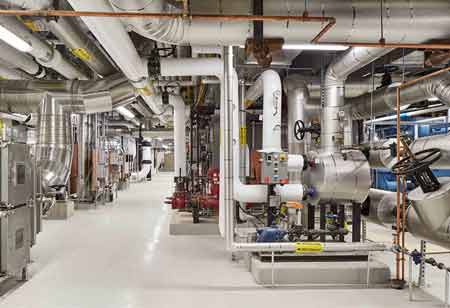Thank you for Subscribing to Construction Business Review Weekly Brief

Systems Driving Sustainability In APAC Buildings
The Asia-Pacific region drives green building initiatives by incorporating MEP systems, smart technologies, natural ventilation, and recycled materials to boost energy efficiency and support sustainable decision-making.
FREMONT, CA: The Asia-Pacific (APAC) region is experiencing a significant rise in green building initiatives. As countries face growing energy demands and environmental concerns, Mechanical, Electrical, and Plumbing (MEP) systems are increasingly recognized as essential in advancing sustainability efforts.
MEP systems are the foundational building infrastructure responsible for regulating internal climate, providing illumination, and facilitating water distribution. In the context of sustainable construction, MEP systems assume a pivotal role in enhancing various aspects:
Energy Efficiency: Implementing sophisticated HVAC systems equipped with variable speed drives, heat recovery ventilators, and building automation technology yields substantial reductions in energy consumption.
Water Conservation: Adopting low-flow fixtures, rainwater harvesting mechanisms, and greywater recycling systems minimizes freshwater utilization.
Indoor Environmental Quality (IEQ): Integrating efficient ventilation and filtration systems elevates air quality, enhancing occupant comfort and well-being.
Renewable Energy Integration: Strategically designing MEP systems to accommodate renewable energy sources such as solar panels and wind turbines further diminishes the building's carbon footprint, fostering sustainable operations.
The APAC region is experiencing an evolution in MEP sustainability practices and advancements. Building Information Modeling (BIM) facilitates MEP systems' cohesive design and optimization, leading to enhanced energy efficiency and decreased construction waste. Smart Building Technologies, including Building Management Systems (BMS) and Internet of Things (IoT) applications, enable real-time monitoring and control of MEP systems, optimizing performance and reducing energy wastage.
District Cooling and Heating Systems offer centralized solutions for sustainable temperature regulation across districts, lowering individual building energy demands. Embracing natural resources for ventilation and lighting through Natural Ventilation and Daylight Harvesting strategies reduces dependency on mechanical systems. Adopting water-efficient fixtures and appliances, including low-flow toilets and showers, is increasingly prevalent. Moreover, there is a growing trend towards using recycled and sustainable materials in MEP components, contributing to minimizing environmental impact.
While considerable strides have been achieved, sustained progress remains imperative. In policy and regulation, governments are pivotal in enforcing stringent energy efficiency standards, fostering the adoption of environmentally friendly construction methods, and advocating for utilizing cutting-edge MEP technologies. Skilled workforce development emerges as a crucial facet, necessitating the cultivation of adept professionals proficient in the conception, installation, and upkeep of advanced and eco-conscious MEP systems. Furthermore, embracing a life cycle cost analysis paradigm represents a pivotal shift, wherein the evaluation extends beyond initial expenditures to encompass long-term operational energy consumption and maintenance outlays, fostering informed and sustainable decision-making in MEP design endeavors.
MEP systems have evolved beyond mere functional requirements; they now serve as the eco-friendly powerhouse of sustainable constructions. Embracing cutting-edge trends and innovations in the APAC region empowers architects, builders, and engineers to harness MEP systems, fostering a future where buildings excel in comfort, functionality, and environmental stewardship.








